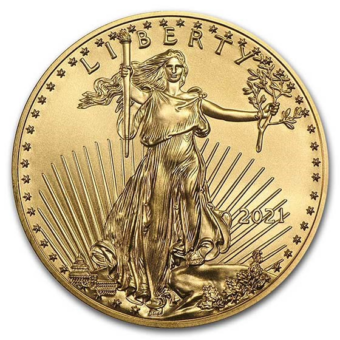A Daily Journey Through the Week's Market
Monday - 9.23.24: Gold prices surged to nearly $2,650, driven by expectations of a Federal Reserve rate cut. Safe-haven demand and weakening U.S. Treasury yields also fueled the rise. Silver followed suit, climbing steadily as both metals benefited from investor uncertainty and inflation concerns.
Tuesday - 9.24.24: Gold exceeded $2,660, with continued optimism around Fed rate cuts boosting demand. Silver similarly gained momentum, driven by inflationary pressures and geopolitical risks. Both metals saw strong safe-haven buying.
Wednesday - 9.25.24: Gold maintained its upward trajectory, hitting new records, while silver reached its highest in two months. Heightened geopolitical tensions, coupled with Fed rate cut expectations, continued to support both precious metals.
Thursday - 9.26.24: Gold climbed further, approaching $2,670 as geopolitical risks persisted and Fed rate-cut bets increased. Silver remained strong, benefiting from the same safe-haven demand that bolstered gold.
Friday - 9.27.24: Gold prices held steady near record highs in early U.S. trading on Friday, with only mild profit-taking after a key U.S. inflation report showed no major surprises. Gold and silver saw modest gains following slightly tamer-than-expected inflation data. December gold was down $0.50 at $2,694.30, while December silver rose $0.034 to $32.38. The core PCE inflation index, favored by the Federal Reserve, came in as expected at 2.7% year-on-year, with no strong market reaction to the report.
Fed's key inflation gauge hits 2.2%, lower than expected
Inflation edged closer to the Federal Reserve’s target in August, opening the door for future rate cuts, according to Friday's report from the Commerce Department.
By the numbers:
- The personal consumption expenditures (PCE) price index rose just 0.1% in August, pushing the 12-month inflation rate down to 2.2%, the lowest since February 2021.
- Core PCE, which excludes food and energy, also increased by 0.1%, bringing the annual rate to 2.7%, in line with expectations.
Why it matters:
- The PCE index is the Fed’s preferred inflation gauge, and the latest figures came in below Wall Street estimates. Economists had anticipated a 2.3% annual increase.
- These numbers signal that inflation continues to cool, easing pressure on the Fed to raise interest rates further.
What they're saying:
“All quiet on the inflation front,” said Chris Larkin, managing director of trading and investing at E-Trade from Morgan Stanley. “Inflation is steady, and while economic growth may be slowing, there's no sign of a dramatic downturn.”
What's next:
- Fed officials have shifted focus from inflation to supporting the labor market, with more rate cuts potentially on the horizon.
- The central bank recently cut its benchmark rate by half a percentage point, the first such move since March 2020, and hinted at more reductions in 2025.
Between the lines:
- Personal income and spending both rose by 0.2%, slightly below expectations, while housing costs saw their largest monthly increase since January, rising 0.5%.
- Stock futures reacted positively to the report, while Treasury yields declined.
Bitcoin Breaks Above $65K as Stocks and Gold Hit Record Highs
What’s happening:
Bitcoin surged past $65,000, joining stocks and gold in reaching fresh all-time highs as central banks lowered interest rates and governments announced new stimulus measures.
Why it matters:
The Federal Reserve's recent rate cut, aimed at controlling inflation, is driving market gains, particularly for riskier assets like Bitcoin. Despite signs of economic uncertainty, these moves have reignited a "risk-on" sentiment across markets.
The big picture:
- Fed’s impact: Lower interest rates have boosted both equities and Bitcoin, but concerns remain about the Fed’s ability to manage inflation without harming growth. Analysts warn of potential volatility.
- Bitcoin surge: Bitcoin hit $65,887 before retreating slightly, with 84% of holders now in profit. The momentum suggests a breakout above $65K could be imminent, with analysts eyeing targets of $67,700 and $80,000.
- Market performance: At the close, the S&P 500, Dow, and Nasdaq posted gains of 0.40%, 0.62%, and 0.60%, respectively.
Key quote:
“Historically, Q4 has been a strong performer for Bitcoin, with seasonality trends indicating a positive outlook.” – Secure Digital Markets analysts
What’s next:
Analysts are closely watching the upcoming Core PCE Price Index report, which could impact the Fed's monetary policy. A favorable report could propel Bitcoin further, while higher inflation data may lead to short-term volatility.
Bottom line:
Easy money policies are driving markets higher, with Bitcoin leading the charge. Investors should prepare for potential volatility but remain optimistic about Bitcoin’s medium-term prospects.
Hyperinflation and Banking Crisis in 2025?
Hyperinflation warning
The U.S. is already transitioning into hyperinflation, says Lynette Zang, CEO of Zang Enterprises. She predicts that by 2025, the effects will become more evident with increased borrowing, money printing, and inflation. Zang points to Federal Reserve data showing the purchasing power of the dollar nearing zero, signaling a potential economic collapse.
Banking sector crisis
Zang describes the U.S. banking system as "extraordinarily sick," citing the surge in bank consolidations and closures. With new regulations reducing capital requirements for major banks, she predicts a significant crisis in 2025 as public confidence in the dollar wanes. Expect high volatility next year.
All Roads Lead to Gold, Prices Above $3,000 - Sprott's Ryan McIntyre
What's happening:
The Federal Reserve's recent 50-basis-point rate cut is drawing attention, but according to Ryan McIntyre, Managing Partner at Sprott Inc., the central bank's actions signal much more than just economic support.
Why it matters:
McIntyre sees the U.S. sovereign debt as the biggest threat to the economy, making gold the top asset for protecting wealth. With the Fed entering a new easing cycle, McIntyre believes it’s only a matter of time before investors shift to gold.
The big picture:
- Fed's message: Despite Powell's cautious words, McIntyre stresses that investors should focus on the central bank’s actions. The rate cut shows the Fed’s concern about keeping the economy afloat without worsening the deficit.
- Gold’s role: McIntyre argues that gold is the best hedge against the economic risks posed by elevated asset prices and sovereign debt. He expects gold to surpass $3,000 an ounce in the near future.
Key quote:
“This is the perfect environment for gold, as the Fed’s bias is clearly to the downside. Gold remains the simplest asset to own to protect your wealth and capital.” – Ryan McIntyre
What’s next:
McIntyre expects the U.S. economy to worsen before recovering and predicts that sovereign debt levels will force more investors toward gold. As service payments on U.S. debt rise, the pressure on GDP growth could further drive this trend.
Bottom line:
For McIntyre, all roads lead to gold—and prices above $3,000 per ounce are inevitable as the economy grapples with mounting debt.
The Decline of the U.S. Dollar Accelerates as BRICS Gains Ground
What’s happening:
The U.S. dollar’s purchasing power is rapidly diminishing in 2024, and experts warn it could lead to hyperinflation. At the same time, the BRICS alliance is positioning itself to challenge the dollar’s status as the world’s reserve currency.
Why it matters:
The Federal Reserve reports that the U.S. dollar has only 3% of its original purchasing power left. According to Lynette Zang, CEO of Zang Enterprises, this alarming trend gives BRICS leverage in its bid to dethrone the U.S. dollar. The implications could ripple through stock and commodity markets, potentially destabilizing the U.S. economy.
The big picture:
- Dwindling dollar: Zang warns that the U.S. dollar’s purchasing power, now at 3%, could reach zero by 2025, triggering hyperinflation, job losses, and market disruptions.
- BRICS momentum: As the U.S. dollar weakens, BRICS is pushing its de-dollarization agenda, further threatening the dollar’s global dominance.
- Digital currencies: Central bank digital currencies (CBDCs) are another rising challenge, with 134 countries developing their own digital alternatives, 66 of which are in advanced testing stages.
Key quote:
“We’re going to see more borrowing, more money printing, more inflation because they have not killed that beast they created.” – Lynette Zang
What’s next:
Zang believes the transition to hyperinflation is already underway and expects the economic pain to become “very obvious” by 2025 as the U.S. grapples with more inflation and debt.
Bottom line:
With BRICS pushing to topple the U.S. dollar and the rise of digital currencies, the dollar’s future is under severe threat, accelerating the risk of hyperinflation in the coming years.
JPMorgan CEO Jamie Dimon: ‘Geopolitics is Getting Worse’
What’s happening:
JPMorgan Chase CEO Jamie Dimon issued a stark warning during a recent interview, emphasizing that global geopolitical risks are escalating, not improving.
Why it matters:
Dimon pointed to ongoing conflicts, particularly the war between Ukraine and Russia, as a significant threat to global stability. He also highlighted the potential for energy supply disruptions, noting recent attacks on crude oil tankers in the Red Sea by Yemen’s Houthi rebels. For Dimon, these risks outweigh concerns over inflation or a U.S. recession.
The big picture:
- Rising geopolitical risks: Dimon stressed that the world is facing increasing instability, warning of potential accidents and broader involvement in conflicts.
- Energy disruptions: Attacks on oil tankers highlight the vulnerability of global energy supplies, adding to the geopolitical challenges.
- Caution on U.S. economy: While the Federal Reserve’s recent rate cuts have buoyed markets, Dimon remains skeptical about the U.S. economy's short-term outlook.
Key quote:
“Geopolitics is getting worse, they are not getting better. There is a chance for accidents in energy supply... You have a lot of war taking place right now.” – Jamie Dimon
What’s next:
Dimon urged the U.S. to brace for a prolonged conflict in Ukraine, signaling that global instability could have lasting economic repercussions.
Bottom line:
Dimon remains cautious about global and economic stability, underscoring that worsening geopolitical risks may pose the greatest challenge in the near term, even as markets remain optimistic.
Next Week’s Key Events
Monday, Sept. 30
- No reports scheduled
Tuesday, Oct. 1
- 9:45 am: S&P Final U.S. Manufacturing PMI (Sept.)
- 10:00 am: ISM Manufacturing (Sept.)
- 10:00 am: JOLTS report (Aug.)
Wednesday, Oct. 2
- 8:15 am: ADP Employment (Sept.)
Thursday, Oct. 3
- 8:30 am: Initial Jobless Claims (Sept. 28)
- 9:45 am: S&P Final U.S. Services PMI (Sept.)
- 10:00 am: ISM Services (Sept.)
Friday, Oct. 4
- 8:30 am: Employment Situation Summary (Sept.)
IMPACT ON PRECIOUS METALS MARKETS
S&P U.S. Services & Manufacturing PMI
The PMIs provide an early snapshot of business conditions. A stronger-than-expected PMI suggests economic growth, which can bolster the U.S. dollar and hurt gold and silver prices, as they are negatively correlated with a strong dollar. Conversely, weaker PMIs signal economic contraction, increasing demand for safe-haven assets like gold and silver.
Initial Jobless Claims
An increase in jobless claims signals a weakening labor market, potentially stoking fears of economic slowdown. This could push gold and silver prices higher. Conversely, a drop in jobless claims suggests a strong economy, which may weaken demand for precious metals.
ISM Manufacturing
This report is a key indicator of manufacturing health. If the index falls below expectations, it can suggest economic weakness, which typically supports gold and silver prices as safe-haven assets.
JOLTS Report
The Job Openings and Labor Turnover Survey (JOLTS) reflects labor market tightness. A decrease in job openings could weaken confidence in the economy, encouraging more investors to move into gold and silver.
ADP Employment
ADP Employment provides an early glimpse into the labor market. A weak report may push investors toward gold and silver, betting on a dovish Fed policy response.
ISM Services
Similar to the manufacturing PMI, a weak services report could indicate a broader economic slowdown, driving demand for gold and silver as safe-haven investments.
Employment Situation Summary (Jobs Report)
This is a critical report. Weak job growth or rising unemployment could prompt expectations of more dovish Fed policies, which often supports higher gold and silver prices due to their inverse relationship with interest rates.






















